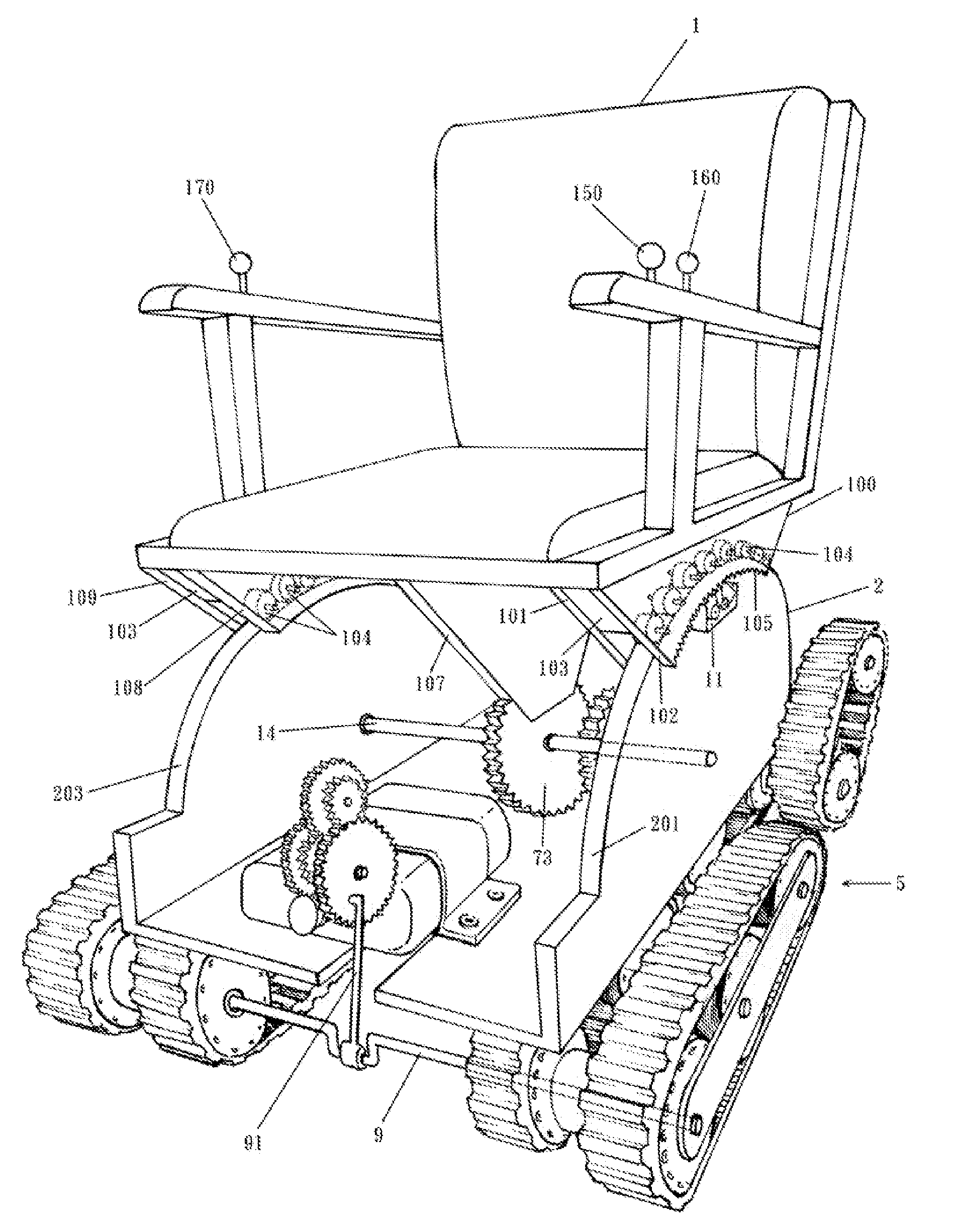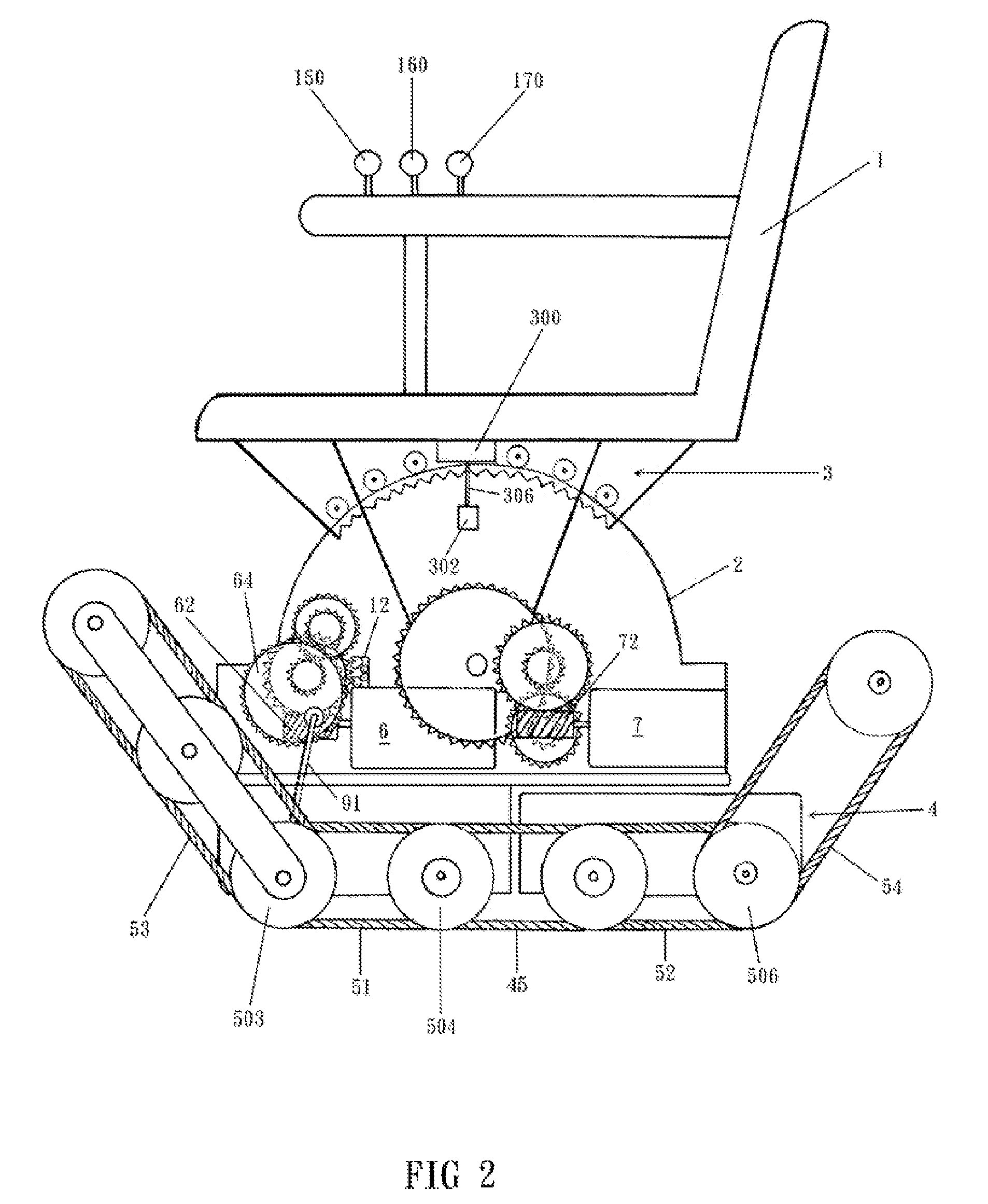Electric wheelchair
a wheelchair and electric technology, applied in wheelchairs/patient conveyances, medical transportation, ambulance services, etc., can solve the problems of inconvenient use, high manufacturing cost, serious safety issues, etc., and achieve the effect of occupying a small space and simple structur
- Summary
- Abstract
- Description
- Claims
- Application Information
AI Technical Summary
Benefits of technology
Problems solved by technology
Method used
Image
Examples
Embodiment Construction
[0043]FIG. 1 is a perspective view of an embodiment of the electric wheelchair of the present invention, which schematically shows merely a part of the components for the clarity thereof. The electric wheelchair of the present invention comprises a seat part 1, a body part 2 served as a support for the seat part, a seat adjustment mechanism 3, a bottom part 4, and a crawler moving mechanism 5.
[0044]The seat part 1 comprises a seat and supporting components 100 fixedly mounted at opposite sides of the bottom of the seat. As those two supporting components are completely identical in their structure, only one of the supporting components will be described below.
[0045]Each supporting component 100 comprises two vertical plates 101, 102 (or 108, 109) being substantially perpendicular to the bottom of the seat, the top edge of the two vertical plates are spaced apart from each other and fixed to the bottom of the seat. The lower edge of the external vertical plate 102 is shaped to be a c...
PUM
 Login to View More
Login to View More Abstract
Description
Claims
Application Information
 Login to View More
Login to View More - R&D
- Intellectual Property
- Life Sciences
- Materials
- Tech Scout
- Unparalleled Data Quality
- Higher Quality Content
- 60% Fewer Hallucinations
Browse by: Latest US Patents, China's latest patents, Technical Efficacy Thesaurus, Application Domain, Technology Topic, Popular Technical Reports.
© 2025 PatSnap. All rights reserved.Legal|Privacy policy|Modern Slavery Act Transparency Statement|Sitemap|About US| Contact US: help@patsnap.com



